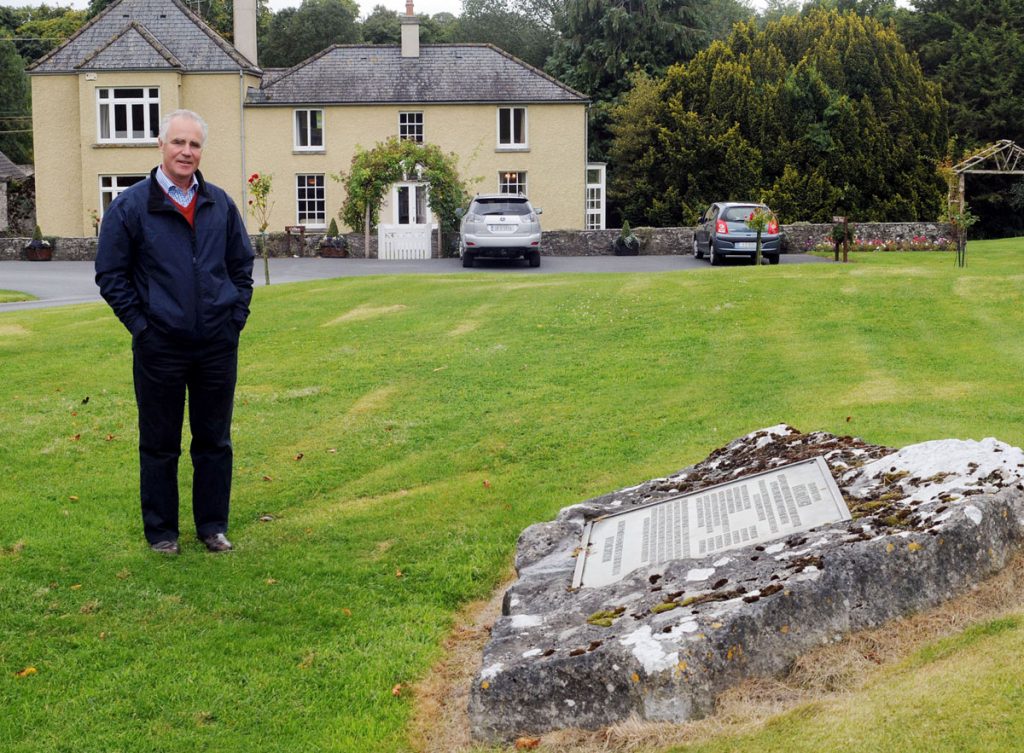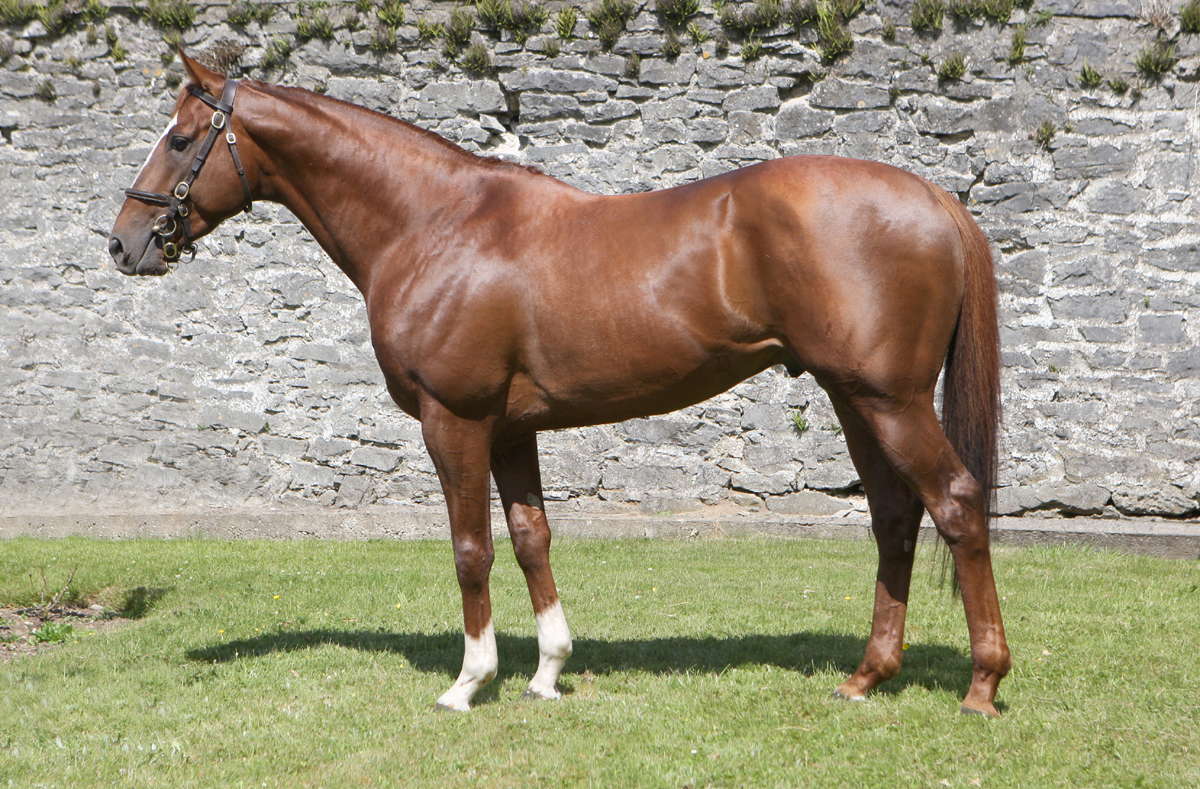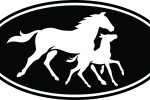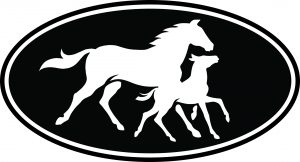One hundred years ago, a grey colt by Roi Herode was foaled in County Kildare. Named The Tetrarch, his spotted coat stood him apart from others, as did his achievements on the racecourse. Unbeaten throughout a brief but brilliant career, injury prevented him from racing on at three but he remains the most dominant two-year-old in history.
The Tetrarch’s stud career was not straightforward either. Fertility problems meant that he would leave only 130 foals, but he was the champion sire of 1919 – the year his outstanding son Tetratema headed the Free Handicap by a record margin – and, principally through his daughter Mumtaz Mahal, he made a mark on the breed that is still very much in evidence today.
It is not just his genetic imprint that has a lingering legacy. Ballylinch Stud, a 1,000-acre swathe of County Kilkenny, was developed by The Tetrarch’s owner Dermot McCalmont in 1914 to be the stallion’s home. The box which housed the McCalmont family’s pride and joy, his name spelt out in the mosaic-tiled floor, still stands and was occupied this season by the stud’s newest recruit Lope De Vega, currently serving his first shuttle season in Australia at Patinack Farm.
The Tetrarch lies not far from his old paddock, a giant slab of granite marking his final resting place within view of the Ballylinch offices. Beyond his is the grave of Tetratema, winner of the 2,000 Guineas, July Cup and King’s Stand Stakes for his owner/breeder McCalmont. He became the second champion sire to stand at Ballylinch and was followed to stud by his 2,000 Guineas-winning son, Mr Jinks, who is buried alongside him.
Having sold the farm to the late Dr Tim Mahony in 1986, the McCalmont family still owns the neighbouring Norelands Stud, but it’s a safe bet to imagine that Dermot McCalmont would be satisfied that the place he so lovingly instigated to befit his champion is in good hands. Its Managing Director John O’Connor, a native of Cashel, first encountered the place as a 14-year-old boy when accompanying his parents on a visit.
I think it’s fair to say the place hasn’t changed fundamentally in almost 100 years
“I first came down here when I was a teenager,” he recalls. “My parents were bringing a mare down for my mother’s friend and she was visiting Appiani. Sassafras was also here at that time and I can still remember walking into The Tetrarch’s stallion box and seeing Sassafras in there. It’s an image that is very much fixed in my mind as, when I was a schoolboy, I was fascinated with Nijinsky and he was trained about four miles from where I grew up. To a certain extent Sassafras was a bit of a villain in my mind for having short-headed him in the Arc.”

John O’Connor by the grave of The Tetrarch at Ballylinch Stud
O’Connor is not the boastful type but it’s impossible to ignore the quiet pride he takes in the place he has overseen for 23 years. A veterinarian by profession, his passion for racing, a happy burden inherited from generations of successful owner/breeder relatives, held sway. He is the perfect custodian for a stud which embodies such an important slice of the sport’s heritage.
“In general we try to make improvements as subtly as we can within the context of an old historic estate,” he says. “Where we’ve built new barns or facilities we’ve tried to utilise existing buildings or set the barns into wooded areas. We’ve tried not to disturb the landscape of the place too much and I think it’s fair to say the place hasn’t changed fundamentally in almost 100 years.”
The stud may not have changed much but its sister estate, Mount Juliet, which is reached by a bridge across the River Nore, has been sympathetically adapted to a thriving modern hotel and leisure complex. Touches of its heritage as an historic sporting estate remain, such as Mount Juliet House with its ornate wooden winners’ board in the hotel bar, and the hunt kennels of the Kilkenny Foxhounds adjacent to the championship golf course.
Historic it may be, but Ballylinch is not an operation mired in the past. While not overtly commercial, it nevertheless has a good track record at the European sales and consigned the joint sales-topper of Tattersalls’ 2008 October Sale, when subsequent Listed winner Berling was bought for 650,000gns on behalf of former ABBA star Benny Andersson.
Its consignment at the same sale this year includes two colts certain to garner attention: an Excellent Art half-brother to Canford Cliffs and a Pivotal half-brother to Mastercraftsman.
These yearlings are being prepared alongside the Goffs Orby Sale draft, the highlight of which could well be a Marju colt out of Lidanski, the dam of Prix du Gros-Chene winner Wizz Kid, a homebred who races in the name of Dr Mahony’s widow Maeve. The Orby draft also includes a three-parts brother to Group 1 winner Lillie Langtry from the first crop of Duke Of Marmalade.
O’Connor says: “We’re not trying to be big volume consignors. We prefer to consign our own stock and stock of our clients. We don’t see ourselves as competing with the major consignors – that’s a different business. We see ourselves as presenting yearlings for sale that either we’ve bred ourselves or have been boarding on the farm. From that point of view we are as big as we need to be and we’re not trying to expand.
“We’re aiming for quality but, equally, if you breed horses you end up selling at all different levels of the market. That’s fine by us. If you have a satisfied client, who has bought a winner at whatever level of cost, then that’s great. Obviously a place like Ballylinch requires a fair amount of investment to run it, so we need to come up with a couple of top yearlings each year.”
Selecting mares to sell is something you have to do each year and you have to do it fearlessly
Ballylinch retains several fillies to race each season and has campaigned two Irish champion two-year-old fillies – Priory Belle and Danaskaya – both of whom subsequently joined the broodmare band, which numbers around 40.
“You have to be assessing your mares constantly, even when your numbers are small,” O’Connor continues. “I think we’ll probably not get any bigger than that and we might even dip below that number.
“Selecting mares to sell is something you have to do every year and you have to do it fearlessly. If you’re afraid that you’re going to sell a mare that may go on and do well for somebody else, then you’ll never succeed yourself. You have to choose ones that you feel don’t fit your programme and sell them. If they do well for someone else, that’s great, and that person might come back to try to buy from you again.”
Aside from the mares, young stock and a peaceful pre-training yard, the other major component of Ballylinch is of course its stallions. The veteran Soviet Star stands alongside young bucks Lawman, Intense Focus and Lope De Vega. Former resident Whipper now stands under the same ownership at Haras du Mézeray. The common link for all bar Intense Focus is that each stallion was campaigned primarily in France.
“It wasn’t a deliberate policy – it evolved a little bit through me getting to know
a number of French breeders,” says O’Connor, who spent several years working in Normandy as a vet at the practice of Dr Jean Plainfossé.
“We brought Soviet Star back from Japan and he obviously raced and was trained in France. Then the opportunity came up to buy Whipper and he brought in even more French connections and I think maybe we ‘ve been targeted a little bit then by people who have a top-class horse in France and want to stand him in Ireland.

Lope De Vega
“It’s worked out that we have two French Derby winners standing here – Lawman and Lope De Vega. They are both by very successful young stallions standing in Ireland so I suppose it was a natural follow-on for both of them to come and stand here.
“They appeal to both Irish and English breeders, and will bring in a number of French breeders. That’s one of the strong points because French racing and breeding is so well funded at the moment in comparison to any other country in Europe. Having horses that are well known in France is certainly no disadvantage.”
One name missing from the stallion roster next year will be the highly successful dual-purpose sire King’s Theatre, who died in June, shortly after he was pipped at the post in the jumps sires’ table by Presenting, having led for much of the season.
For a stallion to be a top National Hunt sire he has to be a very capable Flat sire as well
“King’s Theatre had achieved a lot and he won’t be easy to replace, but we’ve managed to do it before and we’ll try to do it again,” O’Connor says. “We’ll look out for a horse that shares his attributes.”
O’Connor, who admits to a dual-purpose pedigree of his own, his family having bred champion sprinter Bay Express and various top-class jumpers such as Ten Plus, is happy to persist with a mixed roster at the stud, saying: “I find both aspects of the business fascinating. They’re different, obviously, but I think it’s also fair to say that for a stallion to be a top National Hunt sire he has to be a very capable Flat sire as well. It’s quite possible that people would breed good Flat horses by using the leading young jumps sires.
“Most stallions that retire to National Hunt studs now are really top-class horses and they exhibit traits that make the breed great: soundness, class and the ability to stay. It would be unwise to lose all that from the breed and unwise for us to be too sniffy about the attributes that are present in the best jumping sires.
“In whichever side of the business you’re in, only a handful of sires will go on to be really successful and that’s what makes thoroughbred breeding so fascinating, because it’s so difficult.”
Difficult it may be, but well-run operations will always stand the test of time. The forthcoming centenary of Ballylinch Stud is a testament to that.



